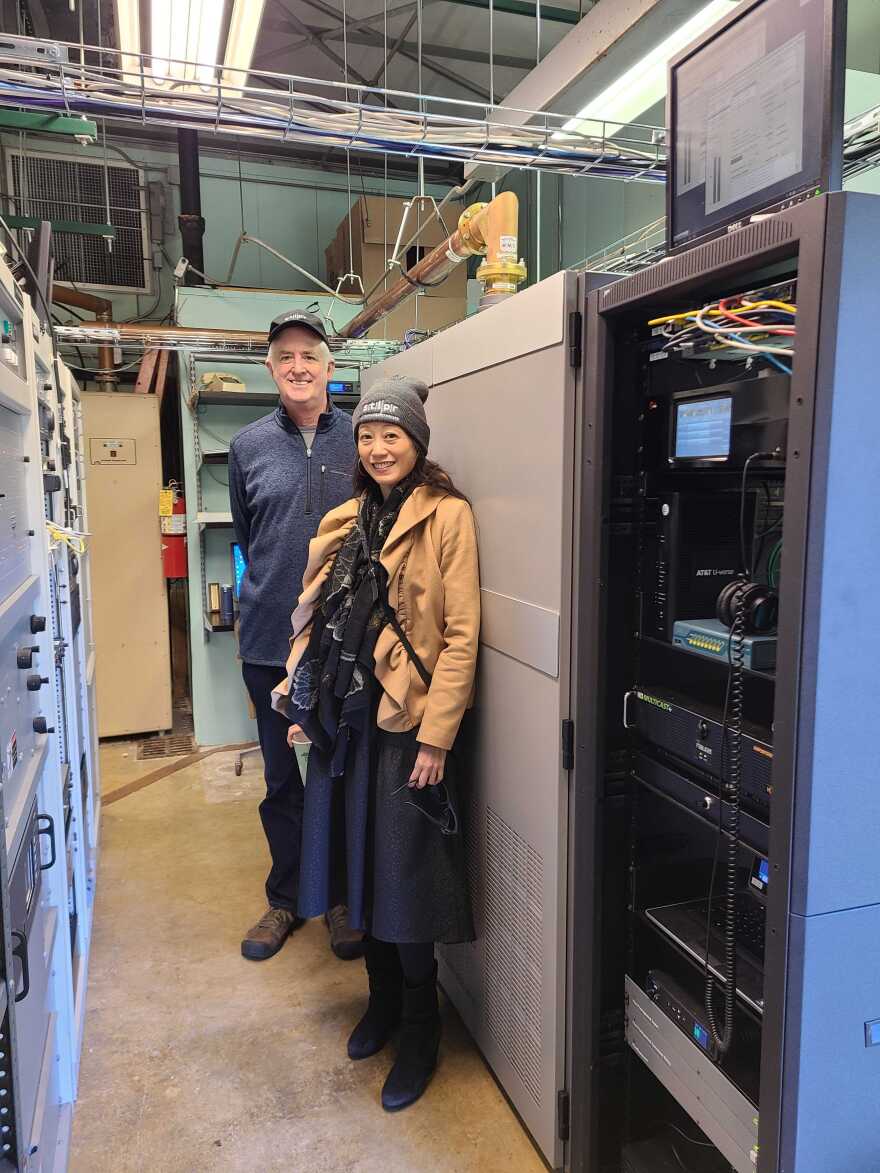After months of careful planning and more than a few pandemic supply-chain delays, St. Louis Public Radio officially welcomed a new solid-state transmitter at an install ceremony in October.

“It’s the capstone achievement for this engineering team,” said Daryl McQuinn, Director of Technology. “This is an upgrade that will last a generation.”
STLPR’s new transmitter is able to produce analog FM radio and HD digital signals simultaneously from one efficient “solid-state” device using cutting-edge solid semiconductors instead of electron tubes. The result is a clear signal at a considerable savings in energy and lowered maintenance costs.
Previously, STLPR’s analog radio signal for KWMU 90.7 and digital HD signals were powered by separate transmitters.
“In the early days of digital radio, that was the only way to do it,” McQuinn said. “So, you just hook them together, right? It’s not as easy as that.”
Combining the two signals was a feat for the engineering team. “We would take those two transmitters that are the size of two big refrigerators, and we’d combine those, so the analog and the digital signal then goes up the tower to the antenna and goes out.”
But merging tens of thousands of watts of power from each transmitter to broadcast to the metro region happens at a considerable loss of efficiency.

“The only way to do it is to lose a bunch of energy in the process,” McQuinn said. The engineering team was eager to transition to a more energy efficient, less time-consuming and more durable solution.
The upgrade allows STLPR to maintain the St. Louis KWMU 90.7 radio signal, the HD programming that listeners have come to love on Jazz 90.7 KWMU-2 and Classical 90.7 KWMU-3, and leaves room for growth.
The transmitter fundraising appeal gained tremendous local support from Emerson and the Berges Family Foundation, who contributed $150,000 to the effort.
“As a community-based news organization, STLPR is fortunate to have support from local foundations and corporations that understand how important it is to keep our broadcast signal on the air,” said Maria Bradford, Director of Development.
McQuinn beams with pride when he talks about this major engineering achievement for the station.
“They build these to last. This is something that happens only two or three times in an engineer’s career,” McQuinn said. “This transmitter that we just put in will be here 30 years from now. And that’s something I wanted to do. That’s part of the legacy I’m proud to leave behind.”



